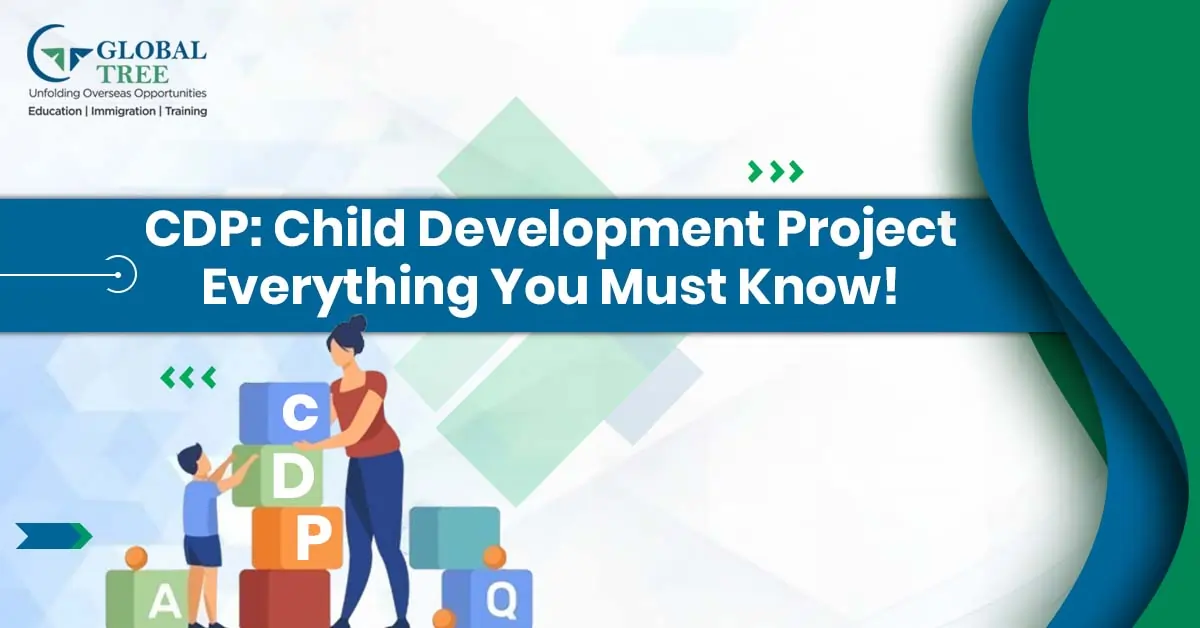Full form of CDP

Introduction
The core of every community is the intense commitment to nurture its most vulnerable members: children. Amidst such a sea of vulnerability, there lies hope in the Child Development Project (CDP), compassion blended with action, in the holistic development of children, especially those from rural and marginalized settings. The name may be simple, but the implications have rippled in the very fabric of society, touching health, education, and overall well-being.
What is CDP?
The Child Development Project is like an intricate tapestry woven from a myriad of threads dedicated to enhancing the lives of children. It fights against the burning issues of malnutrition, inadequate healthcare, and lower educational opportunities. Every project gives life to the idea that every child, despite his social standing, deserves to thrive.
There are wide-ranging interventions under CDPs, broadly falling in the following areas:
- Health and Nutrition: To address nutritional needs of the child and related health concerns that may beset them in those early years to prevent malnutrition and related diseases.
- Early Childhood Education: Creating opportunities for preschool education and other educational programs to light the fire of learning early in life.
(Read More: All about Early Childhood Education course to study abroad)
- Child Rights and Protection: Creating structures to protect children from abuse and exploitation while advocating for their rights.
- Community Awareness: Involving parents and community members in giving the child a conducive environment, talking about health and education.
- CDP envisions an era where every child will reach her/his highest ideal—the physical, mental, and emotional.
General Features of a Child Development Project
CDP projects often manifest a multi-sectoral approach that gives comprehensive services. Some of the main features include:
- Integrated Approach: Health and Nutrition along with education are integrated with social needs, and through this collective approach, CDP reflects a holistic approach towards the well-being of children.
(Note: Teaching children from a young age about the various ways to care for the body is essential.)
- Focus on Poor Children: Primarily targeting children from economically disadvantaged and rural backgrounds to safeguard that no one is left behind.
- Capacity Building: Skills building in local community workers, educators, and parents through training, developing active participation for child development.
- Sustainability: Likely to be sustainable since they encourage community ownership; programs are likely to outlive external help.
- Assistance from Others: CDPs also collaborate with governmental agencies, NGOs, and international organisations to multiply their efforts.
- Monitoring and Record-Keeping: Continuous monitoring in health and education about the children to make sure that the goals are obtained and strategies are chiselled.
- Mothers' Participation: Mothers are also viewed crucially. CDPs also engage mothers in nutrition, health practices, and early childhood education programs.
(Suggested Read: What is the future scope of Public Health Course abroad?)
Why are CDPs Important?
In the developing world, in some countries, children do not have access to as many basic services -health and education in particular- as governments strive for. Instead, this reflects another compelling reason why CDP programs are so important:
- Combating Malnutrition: Education and nutrition support enable CDPs to steer families towards healthy food choices-an important precondition to brain development and overall growth.
- Fostering Early Development: Investing in early childhood education, CDPs provide the foundation of cognitive, language, and social skills development.
- Improving Child Health: Provision of essential health services, immunization, and medical examination has significantly reduced infant and child mortality.
- Protection of Children: the CDPs engage both legally and socially to shield the rights of children while at the same time, protecting their dignity from exploitation, abandonment, etc.
- Empowering Communities: Informing the parents and the community leaders on child development has fostered friendlier child environments as a result of CDPs activities.
(You may also like: 15 Personality Development tips to Help Students Reach their Full Potential)
CDP and Government Initiatives
Across the world, governments have embraced CDPs in a bid to improve child care. For instance, the Integrated Child Development Services program in India aims to take care of all children up to six years with health, nutrition, and education provision. The ICDS delivers its services through Anganwadi centres, providing supplementary nutrition along with preschool education and health check-ups.
These local governments and international organisations such as UNICEF work in coordination with these initiatives toward becoming good implementers of child care practices, spreading positivity across every single section of the society.
What is the Societal Impact of CDP?
The benefits of CDP programs are salvaged by communities at large. The most important benefits to accrue to societies are:
- Reduced Child Mortality: Health care services mean fewer child deaths as children will gain necessary vaccinations and medical care.
- Improved Educational Outcomes: Early childhood education prevents illiteracy leading to higher literacy rates and educational achievements.
- Improved Health and Nutrition: Health and nutrition developments by CDPs will promote better health for generations to come.
- Poverty Alleviation: Although indirect, the empowerment of children through education and health provides avenues for future members of the society to break the chain of poverty.
- Improved awareness of child rights: Community education on child rights reduces cases of abuse and neglect through CDPs.
(Read More: How can you help children develop decision-making skills?)
Frequently Asked Questions about CDP
1. What is the abbreviation of CDP?
CDP is an abbreviation for Child Development Project
2. What are some of the main goals of CDP?
CDP is designed to enable children to grow up healthy, receive adequate nutrition, learn, and be protected so that they may develop all round.
3. Who does the CDP help?
Though the CDP directly targets children, benefits trickle down to parents and the community as a whole through enhancement of knowledge and educational attainments.
4. Is the CDP for the rural child alone?
Most of the CDPs were focused on rural and deprived children, though some projects have worked on city-based slum children also.
5. How is CDP funded?
Funding for CDP programs is obtained from the government, international organizations, NGOs, and private donations.
6. What does CDP do to reduce child mortality?
CDPs offer access to health, vaccination, and nutrition. Thus, these programs minimize exposure to risks of illness and early childhood mortality.
7. What does the community contribute to CDP?
Communities play a core role in the realization of CDP programs. They are involved in the implementation process and educated on the importance of child development.
8. Do the CDP programs support children with disabilities?
Most of the CDP programs have provisions for children with disabilities to get support, hence ensuring that assistance is given in the event of disabilities.
9. How do CDP support children's education?
Since it focuses on early childhood education through preschools and education centers, a child is prepared well for school.
10. Are the CDP projects long-term?
Yes. Most of the CDP projects are geared toward sustaining development by setting a system that remains even when the 'handouts' are done.
12. What is the main objective of the CDP?
The core goal of the CDP is to ensure early childhood care, nutrition, and education, especially for children from underprivileged backgrounds.
13. Who implements the CDP in India?
It is implemented by the Ministry of Women and Child Development, with help from state governments and local administrative bodies.
14. What services are offered under the CDP?
The project provides nutrition supplements, immunization, health check-ups, preschool education, and counseling for mothers on health and nutrition.
15. What is the role of an Anganwadi in CDP?
Anganwadi centers act as the main delivery point for CDP services, offering meals, early education, and healthcare support at the village level.
16. Who is eligible for benefits under the CDP?
Children aged 0–6 years, pregnant women, lactating mothers, and adolescent girls are eligible for different types of assistance under the project.
17. Is CDP only for rural areas?
While it primarily targets rural and tribal areas, CDP services are also provided in urban slums and underdeveloped urban communities.







